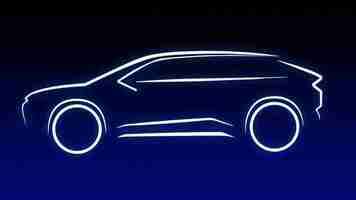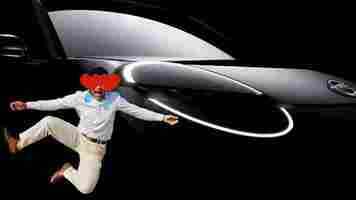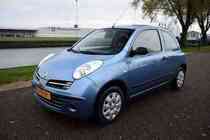I hope Toyota’s solid state EV battery obliterates combustion engines
Solid state batteries have been just a whisper on the winds of the electric vehicle future. That is until Toyota got involved.

According to recent reports, the Japanese carmaker is taking its solid state battery tech to testing next year in preparation for bringing it to market in 2025 .
If it pulls this off, it will be excellent news, in excellent time, for motorists looking to make the switch to electric vehicles. It could also make Toyota the first carmaker to bring solid state battery tech into the real world.
In short, solid state battery technology promises a future of electric driving that we should all be able to get on board with. It could be the final nail in the coffin for the combustion engine industry.
They have good range, more than 300 miles Motor Trend says , require no cooling systems, can charge incredibly quickly in comparison to contemporary power packs, they’re much safer, and don’t degrade to the same extent as liquid or polymer based batteries.
Toyota’s upcoming solid state battery tech could help its future EVs charge in just 10 minutes, and travel more than 240,000 miles before any noteworthy battery degradation sets in, Nikkei reports .
With stats like that, it begs the question of why anyone would worry about range or the lifespan of an EV. There’s really no argument for not buying an EV for your daily driver.
However, we’re still yet to see how solid state batteries work in practice; in a vehicle used for daily driving.
With this news, Toyota says it will begin testing a solid state battery in an actual vehicle next year, which should give some insight into whether the lofty performance benefits hold up.
Toyota isn’t the only carmaker with its eyes on solid state battery tech. Last week, VW-backed QuantumScape said it has a production ready solid state battery ready and is shaping up to put it into cars by 2024.
The solid state battery tech announcement follows what’s been a big week for Toyota EV news.
Last week, the carmaker finally cracked the corner of the lid of its first all-electric car , the BZ. With the initial announcement, we only got a glimpse of the car’s silhouette, but a few days later, exclusive renderings surfaced that provide much more detail — check them out over on Auto Express .


It’s good to see Toyota, one of the world’s biggest carmakers, finally make the switch to the fully electric future, and do so in a big way.
Toyota has previously relied on the fact that its hybrid vehicle tech has allowed it to meet toughening emissions regulations.
However, with outright bans on combustion engine and hybrid vehicles coming to a number of key markets in the next 15 years, the Japanese carmaker is not just taking a step in the right direction, it’s taking a gigantic and exciting leap with both feet in the air — and boy do I hope it can stick the landing.
SHIFT is brought to you by Polestar. It’s time to accelerate the shift to sustainable mobility. That is why Polestar combines electric driving with cutting-edge design and thrilling performance. Find out how .
Be still my aching heart: Nissan’s releasing an electric Micra
Nissan, Renault, and Mitsubishi just announced their common Alliance 2030 roadmap — we’re talking about 35 new EVs, fresh factories, and eye watering investments.

But there’s one bit of news that’s more important than the rest. And you guessed it: there’s gonna be an electric Nissan Micra.
I can barely compose myself. The 2008 Nissan Micra is the best car ever — and I can’t wait for the new one.
No, you’re crying.
I bought mine back in 2013, when the Harlem Shake was still a thing. My uni social life was hampered by Athens’ unreliable (and stinky) public transport and I needed to move around the city free as a petroleum bird.


I needed a car.
Being a broke-ass student, I finally settled on a second-hand 2008 Micra. And although my era of endlessly going out has passed, my Micra lives on — and I love it.
First up, it has character. Real cartoon character. It looks like the sort of car a child would draw and its headlights make it look like a robotic frog. That’s the kinda shit I appreciate.
Plus, it’s a proper city car. It’s small enough to find parking, and big enough to take me on highway trips.
In all these years, it’s been my loyal companion. It even saved me during an accident. I lost control while taking a steep turn, and the poor Micra sacrificed itself to save me.
Don’t worry though, I got it back by paying nearly its purchase price to fix it.
There’s only one thing I’d change about my buddy: its filthy-ass petrol engine.
And this is why I’m so hyped for the electric Micra.
Okay, we don’t know a lot about it, but why does that matter? Nissan will design it (duh) and Renault will do the engineering and manufacturing. Here’s a teaser:
Wonderfully, Nissan isn’t relying on the latest models’ design for its EV — which means we’re going back to the classic days of the robo-amphibian I’m so fond of.
Now, all I’ve got left to do is hope my Micra lasts me until the electric version hits the market. You can do it, pal, I believe in you .
Cities are betting big on smart streetlights — 23% will be connected by 2030
This article was originally published by Sarah Wray on Cities Today , the leading news platform on urban mobility and innovation, reaching an international audience of city leaders. For the latest updates follow Cities Today on Twitter , Facebook , LinkedIn , Instagram , and YouTube , or sign up for Cities Today News.

Global investment in LED and smart streetlighting, as well as additional sensors attached to streetlight infrastructure, is forecast to reach a total of US$28.1 billion over the next decade, according to Northeast Group’s latest market forecast .
The smart infrastructure market intelligence firm expects coronavirus to cause only “limited disruption” to the smart streetlighting sector but predicts an increase in the use of new financing models and market consolidation.
Globally, there are 326 million streetlights and this is expected to grow to over 361 million by the end of 2029. Overall, LED and smart streetlights are projected to reach 73 percent and 23 percent of the total streetlight market, respectively, by then as cities seek to save money and lay the foundations for smart city projects related to mobility, public safety, sustainability and more.
To date, a quarter of all streetlights globally have been converted to LEDs and over 10 million smart streetlights have been connected.
Funding
The report notes that infrastructure investment funds, energy services companies (ESCOs) and urban management companies are playing a growing role in financing and carrying out smart streetlighting projects. It forecasts that this trend will be exacerbated by municipal budget shortages caused by Covid-related economic issues.
“The challenges of 2020 have reinforced some of the key trends that were already developing in the smart streetlighting market,” said Chris Testa, Research Director at Northeast Group.
“Covid-19 has highlighted the importance of automation and resiliency for cities, but reduced municipal budgets mean that access to financing through ESCOs and other third parties is increasingly important. Likewise, a phased-in approach to smart cities that starts with smart streetlighting before proceeding to other applications and a focus on choosing interoperable software platforms that can serve multiple smart city segments are also key trends that have only become more salient in the past year.”
Consolidation
The sixth edition of the Global Smart Street Lighting & Smart Cities: Market Forecast finds that large-scale smart streetlighting initiatives are now underway in almost all regions of the world.
As the market develops, the vendor landscape for smart streetlighting remains extremely fragmented and “ripe for consolidation,” Northeast Group says.
San Diego’s smart streetlight program has sparked controversy over privacy and surveillance concerns, leading to the Mayor recently ordering the sensors and cameras to be deactivated until a governance ordinance is in place. The city is in the process of developing ordinances to govern the use of surveillance technologies, including establishing a Privacy Advisory Board comprised of volunteer citizen members.
SHIFT is brought to you by Polestar. It’s time to accelerate the shift to sustainable mobility. That is why Polestar combines electric driving with cutting-edge design and thrilling performance. Find out how .